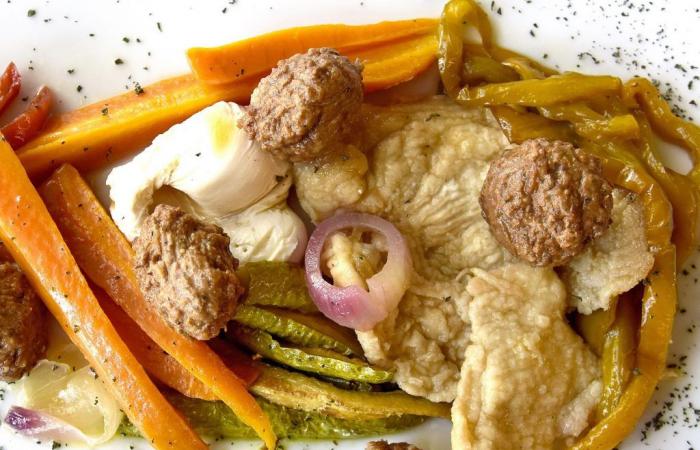ASTI – “The Azzurri’s adventure at the European Football Championship ended in a bitter way, but this summer we still have the World Championship which starts in July and will be played until mid-September”.
They take it with irony at the Astigiani Association which is launching for the second year the event dedicated to carpione, a typical dish of the Piedmontese summer culinary tradition.
Carpione means a type of marinade with garlic, vinegar, onions and sage. In this “bath” vegetables, eggs, meat or fish, first fried or boiled, are left to rest (at least for one night before tasting them, rigorously cold). The origin of the carpione probably dates back to the Middle Ages (but there are already traces of it among the Romans) and responded to the need to preserve food when refrigerators were still yet to come. It is a traditional summer peasant dish.
The Carpionato del mondo wants to relaunch the use of sour, marinades and the classic Piedmontese wine vinegar.
Where is Carpionato played?
There are around fifty venues involved with the same vitality and imagination as Bagna Cauda Day.
There are restaurants, farmhouses, delicatessens, but also Pro loco (those in Casabianca and Quattordio played in preview) which from early July to 15 September they will have carpione proposed in different ways on the menu.
The continuously updated list is on the website www.carpionatodelmondo.it
Each participating venue received a supply of ’24 edition pass booklets from Astigiani to give to carp anglers.
The pass contains the story of the historical context of the carpione in the world with interventions and literary quotes.
There is a nice text by Bruno Gambarotta who describes his “cinematic tench” with a recipe, the historical gastronomic excursus by Gianluigi Bera, the research on agriculture in the world by Paola Gho and Giovanni Ruffa, the advice from dieticians by Giorgio and Caterina Calabrese, the story of Rocco Moliterni, the testimony of Franco Testore.
On the two central pages there is space to put the stamps that certify the carpionist’s passage: each room has been equipped with a personalized stamp.
Awards to the most assiduous carp anglers with the stamp game
At the end of the carpionato, whoever has collected the most stamps from different places among the carpionistas and presents it or sends a photo of it to Astigiani will be entitled to free dinners for two people (5 stamps reached). Those who have reached 8 stamps will receive other tasty prizes in kind and services as well as those who reach 12 stamps and will have the title of “tasteful of the world”!
The Carpionato del Mondo is a solidarity celebration
The Astigiani association, as already happened last year with the payment of 3000 euros to the Piadina Romagnola Consortium in favor of a flooded agricultural company in Romagna, is committed to allocating part of the profits from the event to the Astro Association again this year -Friendly minibus from Asti in support of the action in favor of cancer patients
The allies of the Carpionato del mondo 2024 are the Asti Consortium, the historic royal Varvello vinegar factory of La Loggia, the Davide Barbero torroneria which relaunches the Diavolo Rosso liqueur and the Association for the UNESCO Heritage of the wine-growing landscapes of Langhe-Roero and Monferrato.
Many ways to say “carpione” in the cuisines of the world
An etymological clarification is necessary to motivate the diffusion of this preparation. The historian Franco Cardini places the origins of the Castilian term escabeche, which in turn comes from the Persian sikbaj. However, it seems that the Arab culinary tradition has not implemented this term, while it has had great success in the languages of the Iberian peninsula (escabeche) and Italian (scapece). We must look to these countries, and those under Spanish and Portuguese influence, to trace the “in sour” dishes, whose common denominator, apart from the vinegar and the variable added aromas (garlic, onion, sage, rosemary, mint, saffron), is the basic food fry.
In Liguria there is scabeccio, with small fish such as anchovies, in the Center-South scapece predominates: from the Molise one (based on pieces of fish) to the Gallipoli one, particular for the use of breadcrumbs and saffron, passing through the scapece of courgettes (Campania), to the scapece of Trapani (with the less valuable parts of the tuna). In Sardinia, both for fish and olives, it is made su scabecciu, while in Orbetello scaveccio includes eel slices. In Piedmont and Veneto the words change: on one side carpione, on the other saor, good for marinating sardines but also some vegetables.
In Spanish and Portuguese cuisine it is common to find “escabechados” dishes: mussels, sardines, tuna, cod up to some white meats, such as chicken and quail. France has also been affected, with the Provençal sardines (or mackerel) en escabeche.
Escabeche are very common in Central and South America: Argentina and Bolivia (with meat), Peru, Cuba, Jamaica (with fish), Chile (with fresh onion).
Subscribe to the Quotidiano Piemontese channel on WhatsApp, follow our Facebook page and continue reading Quotidiano Piemontese



